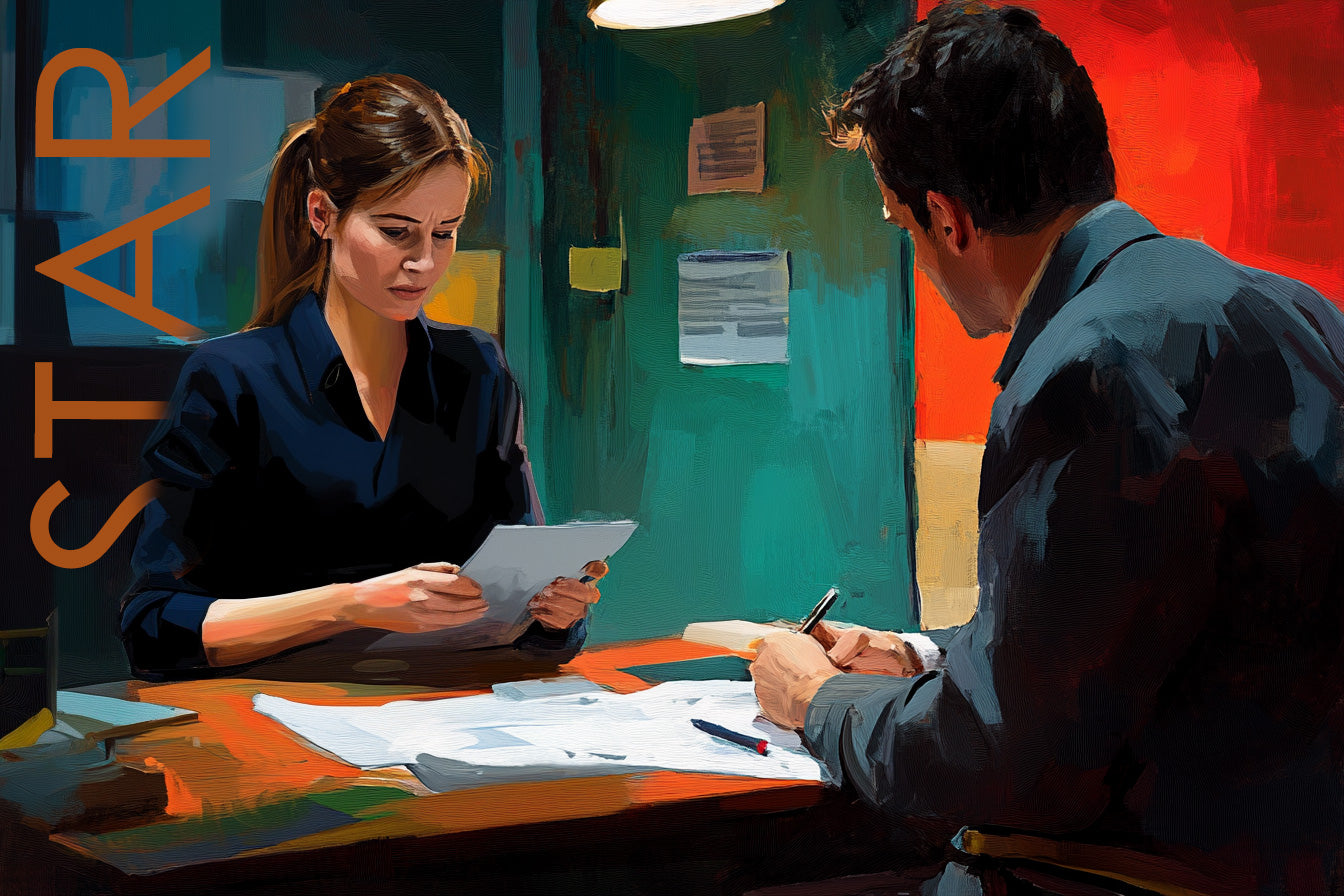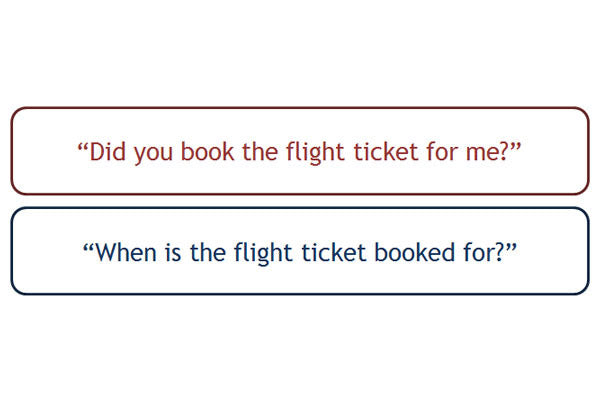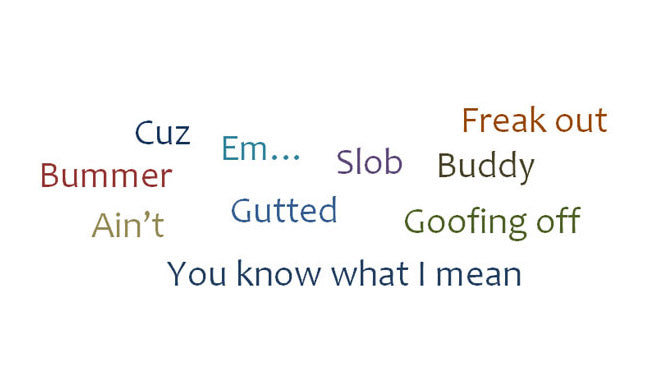Purpose
Asking the right types of questions to get the right kinds of answers is a critical skill everyone must master. This is not always easy since you need to balance between wanting to get more specific details or getting any information you can. This powerful and entertaining exercise helps the delegates to understand the distinction between open and closed questions and practice their questioning skills.
Objective
Delegates will understand the difference between open and closed questions. In addition they will learn the value of two-way communications and confirmations.
What You Need
- Three drawings or pictures; Drawing 1, 2 & 3
- Several blank pieces of paper
Setup
Deliver a presentation on open and closed questions so that delegates are briefed on these type of questions (You can use comprehensive training material for this topics provided in Communication Skills)
Drawing 1:
- Ask for a volunteer, or select a suitable person from the group.
- Give Drawing 1 to the volunteer. No one else should see this drawing.
- Get the volunteer to stand up in a corner of the training room facing all others and describe the drawing to them.
RULE: Delegates are not allowed to ask questions from the volunteer.
- Once delegates have heard the description, they should draw it on a blank piece of paper as closely as they can to what the volunteer has described.
- Get everyone to compare their images with each other and also to the source drawing and follow with a discussion.
Drawing 2:
- Ask for a new volunteer and this time give her Drawing 2.
- The volunteer should describe the drawing to everyone else as before.
RULE: This time the group can only ask Open Questions.
- The tutor is the referee and should indicate if any question is closed and hence not allowed.
- The group should draw what they think is in Drawing 2 as closely as they can based on the descriptions and the open questions asked.
- Get everyone to compare their images with each other and the source drawing and follow with a discussion.
Drawing 3:
- Get another volunteer and give him Drawing 3.
- As before he should describe the drawing to others.
RULE: Others can only ask Closed Questions.
- The tutor is the referee and must make sure only closed questions are asked. Closed questions should invariably get a yes/no or facts as answers.
- The group should draw what they think is in Drawing 3 as closely as they can based on descriptions and the closed questions asked.
- Get everyone to compare their images with each other and the source drawing and follow with a discussion.
Timing
Explaining the Test: 5 minutes.
Activity: Each Drawing takes 10 minutes => Total = 30 Minutes
Group Feedback: 15 minutes.
Discussion
After each drawing exercise, get the delegates to discuss how they felt and thought of the activity. At each stage emphasise the importance of the concept explored.
- Drawing 1: It is important to get feedback and have a two-way communication so that misunderstandings are avoided.
- Drawing 2: Open questions generate a lot of information and force the person to come up with many unanticipated answers that you can use to draw new conclusions. This is a critical aspect of open questioning and it’s why open questioning is more encouraged. The delegates must discover this on their own rather than been told.
- Drawing 3: Close questions are perfect when you want specific details. They are quick and efficient and to the point. All you want is a yes/no answer. They are not particularly good if the person hesitates in giving information away which is quite likely when dealing with clients, customers and in particular competitors.
Notes for Tutor: You have total control over the choice of the drawings. You can set them based on the level you want to teach and also the types of audience you have. For example, if the audience is not good at drawing, select simpler more abstract images. You can also control the entertainment and humour throughout the exercise by careful choice of these images to make it a memorable experience. After all, you want them to remember the lesson long after it has been delivered!
Comments
By Amal @ Friday, October 9, 2009 3:45 PM
A very good one, will try this in my training next month and wil send you feedback.
By Amal @ Tuesday, January 19, 2010 11:37 PM
Feedback was perfect!!!
Great!!!!!! I will also use this icebreaker in my telephone skills training.
Thank you
By moumita deroy @ Sunday, June 6, 2010 10:42 AM
good activity
By joita @ Wednesday, June 23, 2010 5:05 PM
Avery goodlearning activity .Shall definitely use it
By sajid hasan @ Wednesday, November 19, 2014 11:14 PM
i really love your training material but i cant afford to pay for them though they are definitely worth it
By Tony @ Tuesday, March 22, 2022 6:37 PM
Can you please tell me which drawings work best for this activity?
By Chelsea Elm @ Thursday, March 31, 2022 10:14 AM
Tony, try illustrations, various drawings of a house, common items found in the office, anything that has clear easy line drawings so it can be described and replicated. Use a black and white illustration to keep it simple. Hope this helps.
Soft Skills Training Materials
Get downloadable training materials
Online Train the Trainer Course:
Core Skills
Learn How to Become the Best Trainer in Your Field
All Tags
Training Resources for You

Course Design Strategy
Available as paperback and ebook

Free Training Resources
Download a free comprehensive training package including training guidelines, soft skills training activities, assessment forms and useful training resources that you can use to enhance your courses.

Our Comprehensive Guide to Body Language

Train the Trainer Resources
Get Insights - Read Guides and Books - Attend Courses
Training Materials
Get downloadable training materials on: Management Training, Personal Development, Interpersonal Development, Human Resources, and Sales & Marketing














Leave a comment
All comments are moderated before being published.
This site is protected by hCaptcha and the hCaptcha Privacy Policy and Terms of Service apply.